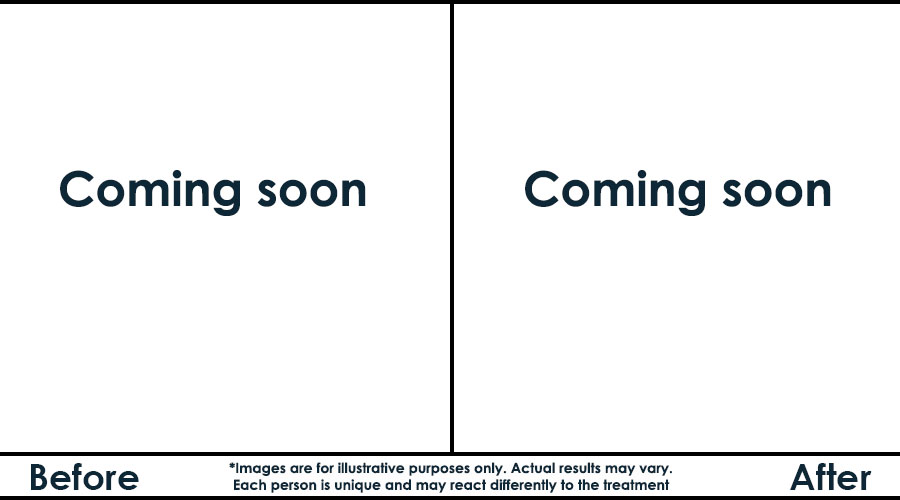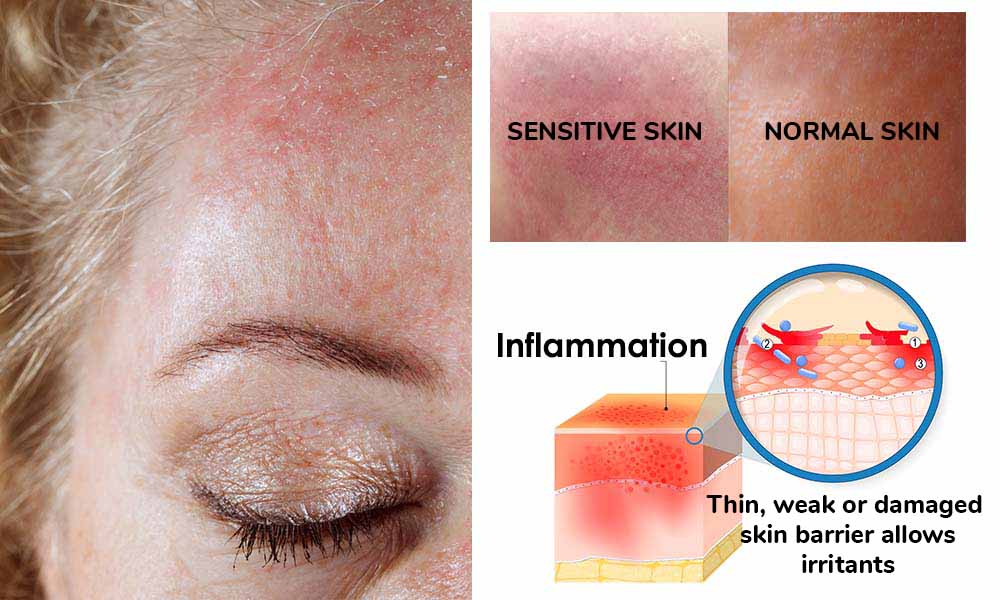Sensitive and Reactive Skin
Soothe Irritation, Strengthen the Skin Barrier, and Reduce Sensitivity
Before & After: Sensitive Skin Treatment Results

Our Approach to Treating Sensitive Skin
1
We assess sensitivity triggers, skin barrier status, and inflammation zones
2
A tailored protocol focused on calming, hydrating, and strengthening your skin
3
Start of Treatment & Follow-Up to ensure progress
Understanding Sensitive Skin: Causes and Signs
Skin is considered sensitive when it overreacts to external factors such as temperature changes, wind, pollution, stress, or skincare products. This hypersensitivity results in discomfort and visible signs of irritation, such as redness or tightness. Sensitive skin requires special attention and adapted care to avoid further aggravation.
Sensitive skin is often described as delicate, easily irritated, and prone to inflammation. Unlike normal skin, it may react even to mild ingredients or gentle environmental changes. This can turn everyday skincare into a challenge and make maintaining comfort and appearance more difficult.
It is also important to distinguish between sensitive skin and reactive skin. Sensitive skin is a skin type, meaning it is consistently more fragile and prone to irritation. Reactive skin, on the other hand, refers to a temporary condition any skin type can become reactive due to specific triggers such as over-exfoliation, harsh products, or stress. While sensitive skin needs long-term care and prevention, reactive skin often requires calming treatments and barrier repair.
Common symptoms of sensitive or reactive skin include:
- Itching
- Tingling
- Burning sensations or discomfort
- Redness or visible irritation
Sensitive skin can affect anyone, regardless of age or skin type. It may appear temporarily or persist chronically, depending on genetics, lifestyle, and skincare habits. A personalized, gentle approach is essential to reduce reactivity and restore skin balance.
Some causes of dry skin
- Genetics
- Thin skin
- Exposure to hot and cold
- Medication
- Hormonal changes
- Contact with irritating chemicals
- Dehydration
- Stress
- Allergens
Visual Examples of Dry and Sensitive Skin

Our Approach
Thanks to 3D imaging technology, we are able to analyze the different layers of your skin and evaluate its overall condition, including inflammation zones, hydration levels, and barrier function. This in-depth assessment helps us determine the origin of your skin’s sensitivity whether it is linked to external aggressors, an impaired barrier, or underlying reactivity.
Following this analysis, we design a personalized treatment plan that is adapted to your specific skin profile, lifestyle, and tolerance level. Our goal is to reduce discomfort, soothe irritation, and help strengthen your skin’s natural defenses over time.
Multiple solutions may be proposed, depending on your needs. These can be used individually or combined for greater effectiveness. In many cases, we recommend a balanced approach that includes gentle, targeted in-clinic treatments along with a simplified at-home routine designed to support your skin’s recovery and stability.
Each plan is developed with care to respect the fragile nature of sensitive skin, and to promote long-lasting comfort, resilience, and a healthy, calm complexion.




